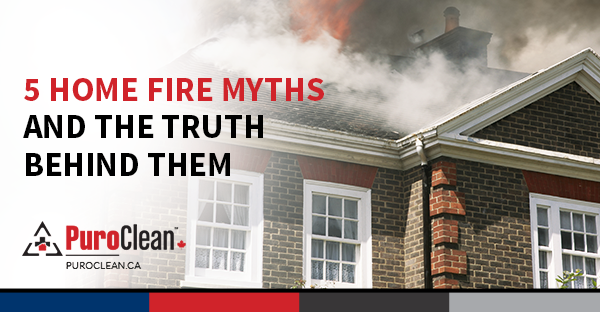5 Home Fire Myths and the Truth Behind Them
 When it comes to information about home fires, people hear many misconceptions that may jeopardize their safety in the event of a home fire. Here is the truth behind five common home fire myths:
When it comes to information about home fires, people hear many misconceptions that may jeopardize their safety in the event of a home fire. Here is the truth behind five common home fire myths:
Myth 1: Smoke alarms are enough to protect homes from a fire.
Truth: Although smoke alarms are very useful for detecting fires, they only help to know when to quickly escape the home or extinguish the fire if it is not too late. On the other hand, a fire sprinkler system is usually enough to extinguish accidental fires.
Myth 2: A few minutes are enough to escape a fire.
Truth: In reality, a small fire can spread to the whole house in just seconds. That is why it is essential to get out of the house immediately in case of a fire. This article provides essential information for making a fire escape plan to be prepared in the event of a home fire.
Myth 3: Newer houses are less likely to be affected by a fire than older houses.
Truth: Homes built in recent years contain more synthetic furnishings, engineered lumber and lightweight wood than older homes, making them more prone to fires. Even though in older homes the electrical wiring is outdated, the materials they were built with are usually more resistant to fires than those of a newer home.
Myth 4: The sprinkler system will activate in the entire home if a fire starts in one room.
Truth: If this happened, water would cause considerable damage to the home. In reality, though, only the sprinkler closest to the fire activates. Other sprinklers activate only if a fire is close enough to them. More facts about fire sprinklers are available here.
Myth 5: In a fire, flames pose the biggest threat to one’s life.
Truth: Flames destroy buildings, but smoke is actually the main culprit responsible for fire-related deaths. Smoke contains a large number of toxic chemicals, such as carbon monoxide, and being trapped in it causes unconsciousness and death.
Since most home fires are related to cooking, it is important to know how to prevent kitchen fires. Tips for using the stove top and oven safely can be accessed here. The PuroClean team stands ready to provide professional restoration services to any property affected by fire, water or mould damage.



